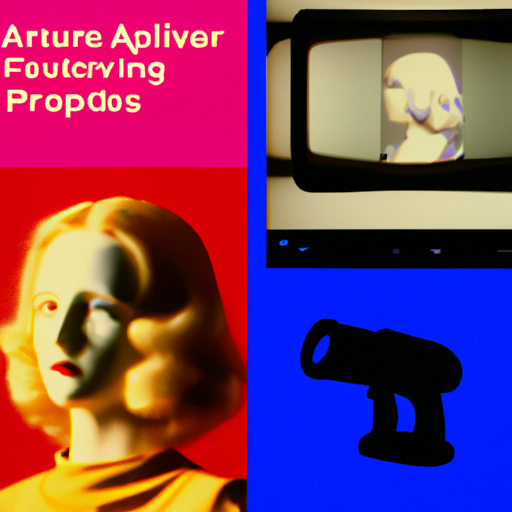
-
Table of Contents
- Future-Proofing Design Skills: Navigating the AI Revolution
- The Impact of AI on Design
- Skills Designers Need to Develop
- Data Literacy
- Collaboration and Adaptability
- Human-Centered Design
- Continuous Learning
- Navigating the AI Revolution
- Embrace AI as a Collaborator
- Stay Curious and Experiment
- Collaborate with AI Experts
- Adapt and Evolve
- Summary
Future-Proofing Design Skills: Navigating the AI Revolution

Artificial Intelligence (AI) is revolutionizing industries across the globe, and the design field is no exception. As AI continues to advance, it is crucial for designers to future-proof their skills to stay relevant in an increasingly automated world. In this article, we will explore the impact of AI on design, discuss the skills designers need to develop, and provide valuable insights on how to navigate the AI revolution.
The Impact of AI on Design
AI has already made significant strides in the design industry, transforming various aspects of the creative process. Here are some key areas where AI is making an impact:
- Automated Design: AI-powered tools can generate designs based on predefined parameters, saving designers time and effort. For example, platforms like Canva and Adobe Sensei offer templates and automated design suggestions.
- Enhanced Creativity: AI can augment designers’ creativity by providing inspiration and generating new ideas. Tools like DALL-E, developed by OpenAI, can create unique images based on textual descriptions.
- User Experience (UX) Optimization: AI algorithms can analyze user behavior and preferences to optimize UX design. By leveraging data, designers can create personalized and intuitive experiences for users.
- Generative Design: AI can generate multiple design options based on specified constraints, enabling designers to explore a wider range of possibilities. Autodesk’s generative design software is a prime example of this technology.
While AI offers numerous benefits to designers, it also raises concerns about job displacement and the need for upskilling. However, by embracing AI and developing the right skills, designers can thrive in the AI revolution.
Skills Designers Need to Develop
To future-proof their careers, designers must acquire a combination of technical and soft skills that complement AI technologies. Here are some essential skills designers should focus on:
Data Literacy
Designers need to become proficient in working with data to leverage AI effectively. Understanding how to collect, analyze, and interpret data allows designers to make informed decisions and create data-driven designs. Additionally, designers should be familiar with data visualization techniques to communicate insights effectively.
Collaboration and Adaptability
As AI becomes more integrated into the design process, collaboration between designers and AI systems will become crucial. Designers should be adaptable and open to working alongside AI tools, understanding their strengths and limitations. Collaborating with AI can enhance efficiency and creativity, leading to better design outcomes.
Human-Centered Design
While AI can automate certain design tasks, it cannot replace the human touch. Designers should focus on developing skills that emphasize empathy and understanding of human needs. By prioritizing human-centered design principles, designers can create experiences that resonate with users on a deeper level.
Continuous Learning
The AI landscape is constantly evolving, and designers must keep up with the latest advancements. Engaging in continuous learning through online courses, workshops, and industry events is essential to stay updated and adapt to new AI technologies. Designers should also actively seek feedback and learn from AI systems to improve their own skills.
Navigating the AI Revolution
As designers navigate the AI revolution, here are some strategies to help them thrive:
Embrace AI as a Collaborator
Instead of viewing AI as a threat, designers should embrace it as a collaborator. By understanding the capabilities of AI tools and integrating them into their workflow, designers can enhance their productivity and creativity. AI can automate repetitive tasks, allowing designers to focus on more strategic and innovative aspects of their work.
Stay Curious and Experiment
Designers should maintain a curious mindset and be willing to experiment with AI technologies. Trying out new tools and techniques can uncover innovative ways to incorporate AI into the design process. By exploring the possibilities of AI, designers can discover unique solutions and push the boundaries of their creativity.
Collaborate with AI Experts
Collaborating with AI experts can provide designers with valuable insights and guidance. By working together, designers and AI experts can leverage their respective expertise to create groundbreaking designs. This collaboration can also help designers understand the technical aspects of AI and how it can be applied to design challenges.
Adapt and Evolve
Designers must be adaptable and willing to evolve their skills as AI technology advances. Keeping up with the latest trends and developments in AI allows designers to stay ahead of the curve. By continuously learning and upskilling, designers can position themselves as valuable assets in an AI-driven industry.
Summary
The AI revolution is transforming the design industry, presenting both opportunities and challenges for designers. By embracing AI as a collaborator, developing essential skills, and staying adaptable, designers can future-proof their careers and thrive in an AI-driven world. Data literacy, collaboration, human-centered design, and continuous learning are key skills that designers should focus on. By navigating the AI revolution with curiosity, experimentation, and collaboration, designers can unlock new possibilities and create innovative designs that resonate with users.
